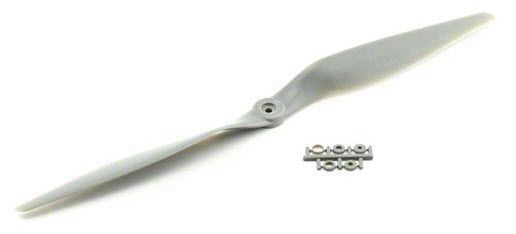Review :
What a beautiful plane this is! April, 2021
Positives:
- Very nice film finish - gorgeous design and just a little additional shrinking required.
- I like the cowl attachment method - no bolts visible down the sides of the fuselage.
- Very well glued up airframe. Liberal use of carbon laminated ply throughout. Even good use of square carbon longerons in zones subject to high bending stress (underside of the fuse).
- The undercarriage mounting is very sturdy! The main mounting plate fastens to two aluminium angle pieces that transfer load to the sides of the fuselage via front and back sloping/bracing members.
- Very nice painted carbon undercarriage.
- Sturdy wheel pants left to the owner to drill and install blind nuts. This means the alignment is up to the owner.
- I like the wheel stub axles. The inner collars are now replaced with a step in the diameter to ensure the wheel is correctly registered.
- Very nice canopy clip. A torsion bar with knurled and anodised end knobs that just slide along a bent slot to lock and unlock.
- Ball jointed push rods are great.
- Rolls Royce tail wheel assembly!
- Double wing bolts are terrific. What makes them stand out is the fact that the bolts stay permanently in the wing root. When they are slid into place against the fuse, the accepting holes are large enough to take the entire bolt head. Once in place against the fuse, latches (on the inside of the fuse) are slid in behind the bolt heads and the bolts fastened (just one turn) up against the latches!
- Super easy-mounting SFGs are employed. They register onto the end of the wing, slide back about 20mm and then the thumb screws are tightened. Thumb screws remain permanently with the SFGs even when stored.
Negatives:
- The supplied wheels are very hard! They do fit the spats well and so are in use...
Out-of-Box:
- Very sturdy packaging.
- All components nicely held and protected in place by bubble wrap, plastic bags and tape.
- Interesting grouping, bubble strip pack for all small components.
Build:
- The provided spinner is a little out of straight but looks terrific.
- The undercarriage structural support is well considered and very tough.
- Ailerons and elevators were pre-hinged and fully installed and included plastic sealing strips to the full-length, underside of the joins. These did require a little trimming since they were making a lot of crinkly noise during bending.
- In general, the build went very well. Rudder nice and square to the wings. The rear stabiliser required no shimming to get it parallel with the wings. I certainly like the Pilot-RC method for building the stabilizer in one piece. Combined the elevator halves for single servo actuation.
- I employed a mid-located servo for the rudder (with comensurate pull-pull cable operation). Very well done cable slits in the fuse. Nice shrink tube over the cable end fastenings to horns and ball joints.
- The motor mount is my proprietary 4x4mm threaded shafts with 16 thread-locked nuts. This design allows for very accurate positioning of the motor.
- Installed an arming switch (XT90 version) and 20 amp regulator. The regulator is connected to the batteries and is armed when the switch is inserted.
Power Considerations:
- Using the 2 x 5S 5000 50C batteries, Dualsky ECO5330-225kv and 19x12 APC prop theoretically yields about 2600 watts at the ESC. This equates to a theoretical 532w/kg well past the 450w/kg considered a minimum requirement for an aerobatic plane. This plane is very nimble.
- After a full 5 minute sequence, the plane lands with all cool components - nice.
- The sound of the plane with this power system is very pleasing. Really quiet and powerful.
- Knife-edges at 50% throttle with fuse at 40degrees (equates to medium rudder).
Comments after about 30 flights:
- Even at high power the plane produces very low noise - pleasingly quiet in flight.
- I am considering ditching the spats and going to naked, 3.25inch, Dubro "low bounce" wheels. We do have a very bouncy runway.
Overall Performance:
- Altogether a very nice performing plane. I am well pleased. The FC-151 works very nicely to remove wind turbulence bumpiness.
- I have added the provided SFGs (Side Force Generators) and the roll performance is great with quite adequate knife edge buoyancy. The SFGs were checked for parallel installation to avoid left to right oscillation. All good.
Super plane, top marks to Pilot-RC. I especially like the artwork - nice lime green leading parts.

Manufacturer: APC
Type: Electric
Size: 19x12
Manufacturer: Dualsky
Model: ECO 5330
RPM/V: 225kv
Max Power: 3,600W
Shaft Diameter: 8mm
Weight: 640g
This motor is nothing short of spectacular!!
Manuf.: Turnigy
Model: YEP
Rating: 120A
BEC: No, Opto only.
YEP programming card required for setup.
For Elevator & Ailerons - HS-645MG
Voltage: 6v max
Torque: 9.6kg.cm at 6V
Speed: 0.20sec/60degrees at 6v
For the Rudder - HS-5665MH
Voltage: Up to 7.4v (HV)
Torque: 10kg.cm at 7.4v
Speed: 0.14sec/60degrees at 7.4v
Manufacturer: HRB
Size: 5S 5000mah 50C
Good quality batteries. Used as 2 x 5S in series for a 10S result. Very low internal resistance, <4m.ohms per cell.
Pause this video at any point to study the internal components
